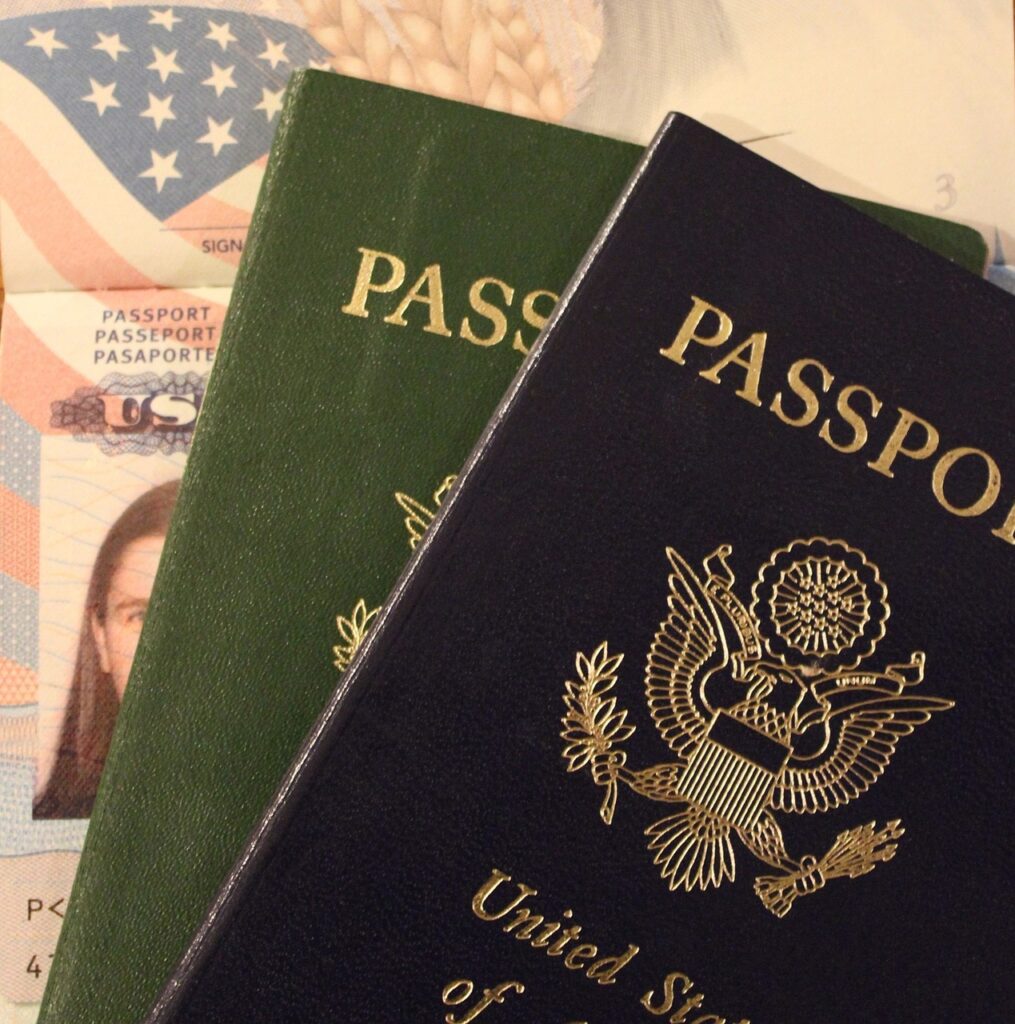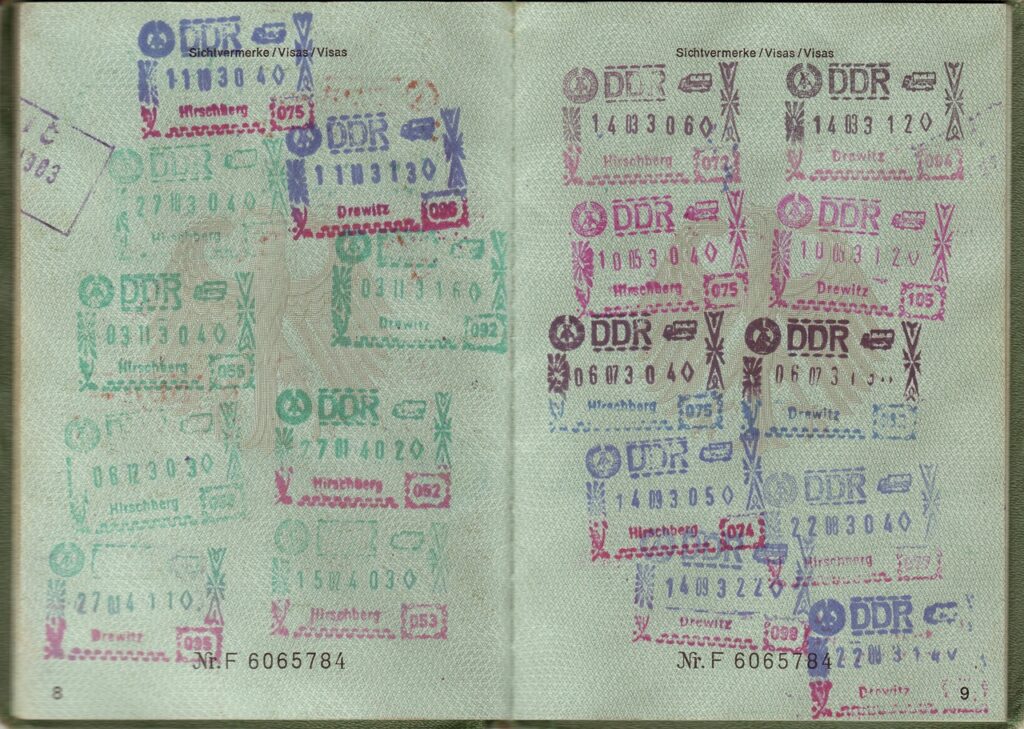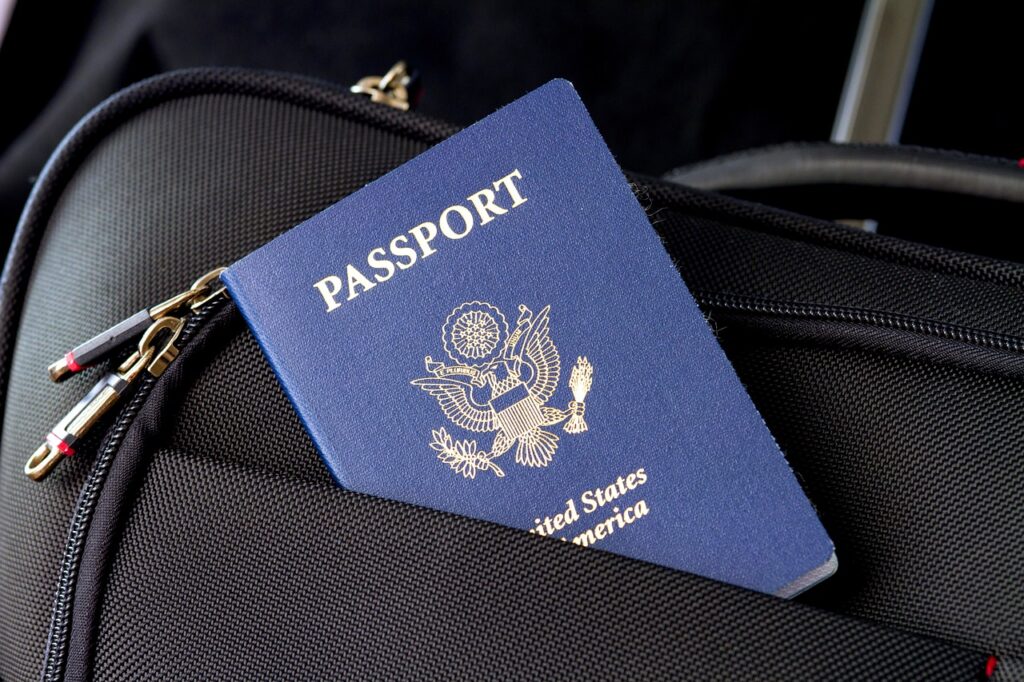If you’re a Canadian resident and have ever wondered about the need for a U.S. visa, look no further! Many Canadians often find themselves pondering this question, unsure of the requirements when it comes to crossing the border into the United States. In this article, we’ll provide you with all the information you need to know about whether or not you need a U.S. visa as a Canadian resident. Don’t worry, we’ve got you covered!

This image is property of pixabay.com.
Understanding the U.S. Visa Requirements for Canadian Residents
If you are a Canadian resident planning to visit the United States, it is essential to understand the U.S. visa requirements to ensure a smooth and hassle-free journey. The U.S. visa system can be complex and confusing, but with the right information, you can navigate through it successfully. This article will provide a comprehensive overview of the U.S. visa requirements for Canadian residents, covering various types of visas, including the Visa Waiver Program, nonimmigrant visas, and specialty occupation visas.
Overview of the U.S. Visa System
The U.S. visa system is designed to regulate the entry and stay of foreign nationals in the United States. It is important to note that Canadian citizens generally do not need a visa to enter the U.S. for short visits. Canadian citizens enjoy certain privileges under the U.S. immigration laws due to the close relationship between the two countries. However, there are certain circumstances where Canadian residents may require a U.S. visa.
Importance of Determining Visa Requirements
Determining the visa requirements for your visit to the United States is crucial to avoid any complications or potential legal issues. While Canadian citizens are generally exempt from visa requirements, there are specific conditions and situations where a U.S. visa may be necessary. By understanding the visa requirements and ensuring proper documentation, you can ensure a smooth and stress-free entry into the United States.
Canadian Citizens and Visitors Visa Exemptions
As a Canadian citizen or resident, you are generally exempt from the visa requirement under the Visa Waiver Program (VWP). The VWP allows eligible visitors from participating countries to enter the U.S. for tourism or business purposes without obtaining a visa. Under the VWP, Canadian residents can stay in the U.S. for up to 90 days without a visa. However, it is important to note that not all Canadian residents may qualify for the VWP, and in such cases, a U.S. visa would be required.
Types of U.S. Visas for Canadian Residents
Canadian residents who are not eligible for the Visa Waiver Program may need to apply for a nonimmigrant visa. Nonimmigrant visas are temporary visas issued for specific purposes, such as tourism, education, work, or business. There are various categories of nonimmigrant visas available for Canadian residents, each catering to different purposes and qualifications. Understanding the different types of visas can help you determine the appropriate visa for your specific situation.
Visa Waiver Program (VWP) for Canadian Residents
Introduction to the Visa Waiver Program
The Visa Waiver Program (VWP) is a program that allows eligible visitors from participating countries, including Canada, to enter the United States for tourism or business without a visa. Under the VWP, Canadian residents can stay in the U.S. for up to 90 days. The VWP promotes travel and trade between the United States and participating countries, making it easier for Canadian residents to visit the U.S. for short trips.
Eligibility for the Visa Waiver Program
To be eligible for the Visa Waiver Program, Canadian residents must meet certain criteria. Firstly, you must hold a valid Canadian passport, as the VWP only applies to Canadian citizens. Additionally, your purpose of visit should be for tourism or business, not exceeding 90 days. You must also meet other eligibility requirements, such as having a return ticket, no criminal record, and no previous visa refusals or overstay in the U.S.
Advantages and Limitations of the VWP
The Visa Waiver Program offers several advantages for Canadian residents. It eliminates the need to apply for a visa, saving time and effort in the application process. It also allows for multiple entries within a specified period, making it convenient for frequent travelers. However, it is important to note that the VWP has limitations, such as the maximum stay of 90 days, no extension or change of status allowed, and restricted activities that can be carried out under the program. If your visit exceeds the 90-day limit or you plan to engage in activities not permitted under the VWP, a nonimmigrant visa may be required.
Nonimmigrant Visas for Canadian Residents
Categories of Nonimmigrant Visas
If you are a Canadian resident who does not qualify for the Visa Waiver Program or plan to stay in the U.S. for longer than 90 days, you may need to apply for a nonimmigrant visa. Nonimmigrant visas are temporary visas issued for specific purposes, such as education, work, business, or tourism. There are several categories of nonimmigrant visas available for Canadian residents, each catering to different purposes and qualifications.
Common Nonimmigrant Visas for Canadian Residents
Some of the common nonimmigrant visas for Canadian residents include the B-1 and B-2 visitor visas, F, M, and J student and exchange visitor visas, H temporary work visas, L intracompany transfer visas, E treaty trader and treaty investor visas, and TN visas for specialty occupation workers. The specific visa you need will depend on the purpose of your visit and your qualifications. Each visa category has its own requirements, application processes, and limitations, so it is essential to thoroughly research and understand the specific visa that applies to you.
Tourism and Business Visitor Visas (B-1/B-2)
Overview of B-1 and B-2 Visitor Visas
The B-1 visitor visa is issued for individuals visiting the U.S. for business-related purposes, such as attending conferences, negotiating contracts, or consulting. On the other hand, the B-2 visitor visa is for individuals visiting for tourism, pleasure, or medical treatment. Both visas allow Canadian residents to stay in the U.S. for a maximum of six months, with the possibility of extension in some cases.
Application Process for B-1 and B-2 Visas
To apply for a B-1 or B-2 visitor visa, Canadian residents need to complete the appropriate application forms, pay the required fees, and schedule an interview at the nearest U.S. embassy or consulate. During the interview, you will be required to provide supporting documents, such as a valid passport, evidence of ties to your home country, and the purpose of your visit to the United States. It is essential to present a compelling case and demonstrate your intention to return to Canada after your visit.
Valid Uses of B-1 and B-2 Visas
The B-1 and B-2 visitor visas allow Canadian residents to engage in various activities, such as attending business meetings, conducting research, participating in educational conferences, or enjoying a vacation. However, it is important to note that activities involving employment or receiving payment in the United States are not permitted under these visas. If your visit involves work-related activities, you may need to consider other visa categories such as the H visa for temporary work.

This image is property of pixabay.com.
Student and Exchange Visitor Visas (F/M/J)
Understanding F, M, and J Visas
If you are a Canadian resident planning to study or participate in an exchange program in the United States, you will likely need to apply for an F, M, or J visa. The F visa is for academic students, the M visa is for vocational students, and the J visa is for exchange visitors. These visas allow Canadian residents to pursue education or participate in approved exchange programs in the U.S.
Applying for F, M, or J Visas
To apply for an F, M, or J visa, you will need to obtain acceptance at a recognized educational institution or a designated exchange program sponsor in the United States. Once accepted, you can proceed with the visa application process, which involves filling out the necessary forms, paying the fees, and scheduling an interview at the U.S. embassy or consulate. During the interview, you will be required to demonstrate your eligibility, financial capability, and intention to return to Canada after completing your studies or exchange program.
Enrollment and Exchange Programs
While studying or participating in an exchange program in the United States, it is important to comply with the rules and regulations set by the U.S. Citizenship and Immigration Services (USCIS). This includes maintaining full-time enrollment, completing the program within the specified duration, and complying with any work or internship restrictions. It is essential to stay informed about your visa requirements and seek guidance from your educational institution or program sponsor to ensure a successful and lawful stay in the United States.
Temporary Work Visas (H Visas)
Overview of H Visas
If you are a Canadian resident seeking employment in the United States, you may need to apply for a temporary work visa, commonly known as an H visa. The H visa category includes several subcategories, such as H-1B for specialty occupation workers, H-2A for seasonal agricultural workers, H-2B for non-agricultural temporary workers, and H-3 for trainees. Each subcategory has its own specific requirements and limitations.
Popular H Visas for Canadian Workers
Among the H visas, the H-1B visa is particularly popular for Canadian residents seeking employment in specialty occupation fields, such as engineering, IT, healthcare, or finance. The H-1B visa allows U.S. employers to hire foreign workers in specialized roles where there is a shortage of qualified U.S. workers. Canadian residents must have a job offer from a U.S. employer and meet the specific qualifications for the H-1B visa.
Employment and Sponsorship Requirements
To qualify for an H visa, Canadian residents must have a job offer from a U.S. employer who is willing to sponsor their visa application. The employer must file a petition with the USCIS on behalf of the Canadian worker and demonstrate that hiring a foreign worker will not adversely affect U.S. workers. The petition should include proof of the job offer, evidence of the candidate’s qualifications, and compliance with prevailing wage requirements. It is important for both the employer and the Canadian worker to understand the sponsorship responsibilities and obligations associated with the H visa.

This image is property of pixabay.com.
Intracompany Transfers (L Visa)
Introduction to L Visa for Canadian Residents
The L visa is designed for Canadian residents who are employed by a multinational company and are being transferred to a U.S. branch, subsidiary, or affiliate of the same company. It allows Canadian residents to temporarily work in the United States, maintaining their employment relationship with the foreign company. The L visa is beneficial for Canadian residents seeking career advancement or opportunities in the United States.
Requirements for L Visa
To qualify for an L visa, Canadian residents must meet certain requirements. Firstly, they must have been employed with the foreign company for at least one continuous year within the three years preceding the visa application. Secondly, the U.S. branch, subsidiary, or affiliate of the foreign company must have a qualifying relationship with the Canadian worker. Lastly, the Canadian worker must be transferring to the U.S. to perform executive, managerial, or specialized knowledge duties.
Duration and Limitations
The L visa allows Canadian residents to work in the United States for an initial period of up to three years, with extensions granted for a maximum total period of seven years for L-1A visa holders and five years for L-1B visa holders. It is important to note that the L visa is a nonimmigrant visa, which means it is temporary in nature and does not lead to permanent residency. However, the L visa can serve as a pathway to a green card for Canadian residents who wish to pursue permanent employment in the United States.
Treaty Trader and Treaty Investor Visas (E Visas)
Understanding E Visas for Canadian Residents
The E visa category includes the Treaty Trader (E-1) visa and the Treaty Investor (E-2) visa. These visas are designed for Canadian residents engaged in substantial trade or investment activities between Canada and the United States. The E visas aim to promote and facilitate trade and investments between the two countries.
Eligibility and Requirements
To be eligible for an E-1 Treaty Trader visa, Canadian residents must be engaged in substantial trade between the U.S. and Canada. This could involve the exchange of goods, services, or technology. To qualify for an E-2 Treaty Investor visa, Canadian residents must have made a substantial investment in a U.S. business and be actively involved in the management of the business. Both visas require a qualifying treaty between Canada and the United States.
Benefits and Limitations
The E visas offer several benefits for Canadian residents. They allow for a longer stay in the United States compared to other nonimmigrant visas, with E-1 visas initially granted for up to two years and E-2 visas for up to five years. The E visas also allow for multiple entries and provide the opportunity to work and study in the United States. However, it is important to note that the E visas are subject to specific limitations, such as the requirement to maintain the substantial trade or investment activities and the necessity of renewing the visa periodically.
Specialty Occupation Visas (TN Visa)
Overview of TN Visas for Canadians
The TN visa category is specifically designed for Canadian and Mexican citizens seeking temporary employment in certain professional occupations in the United States. The TN visa is part of the North American Free Trade Agreement (NAFTA) and allows for expedited processing for Canadian residents. The TN visa is particularly beneficial for Canadian professionals in fields such as science, engineering, teaching, and healthcare.
Qualifications and Application Process
To qualify for a TN visa, Canadian residents must meet certain educational and professional qualifications. The specific requirements vary depending on the occupation, but generally, a Canadian worker must have a job offer from a U.S. employer and possess the necessary credentials, such as a degree or professional license. The TN visa application involves submitting the required forms, supporting documents, and undergoing an interview at the U.S. embassy or consulate.
Restrictions and Renewals
The TN visa allows Canadian residents to work in the United States for an initial period of up to three years. The visa can be renewed indefinitely in three-year increments as long as the applicant continues to meet the requirements. However, it is important to note that the TN visa is limited to specific professions and does not provide a direct path to permanent residency. Canadian residents must be mindful of the restrictions and limitations associated with the TN visa and consider alternative visa options if their long-term goal is to obtain permanent residency in the United States.
Conclusion
Seeking Professional Advice Given the complexity of the U.S. visa system and the numerous options available, it is highly recommended to seek professional advice when determining your visa requirements. Immigration lawyers or experts can provide personalized guidance based on your specific circumstances and help you navigate through the application process.
Understanding the Importance of Proper Visa Documentation Proper visa documentation is crucial to ensure a successful entry into the United States. Failing to provide the necessary documentation or meet the requirements can result in visa denials, delays, or even legal consequences. It is important to thoroughly research and understand the visa requirements, gather all required documents, and present a compelling case during the visa application process. By understanding the importance of proper visa documentation, you can increase the chances of a smooth and successful visa application and entry into the United States.
In conclusion, as a Canadian resident planning to visit the United States, it is essential to understand the U.S. visa requirements that apply to you. Whether you qualify for the Visa Waiver Program, require a nonimmigrant visa, or are interested in specialty occupation visas, thorough research and preparation are key. By seeking professional advice, understanding the importance of proper visa documentation, and taking the necessary steps, you can ensure a seamless and lawful visit to the United States. Remember to check the most up-to-date information and requirements from official sources, such as the U.S. Department of State or U.S. Citizenship and Immigration Services, to ensure accurate and timely information.
Didn't find what you were looking for? Search here
